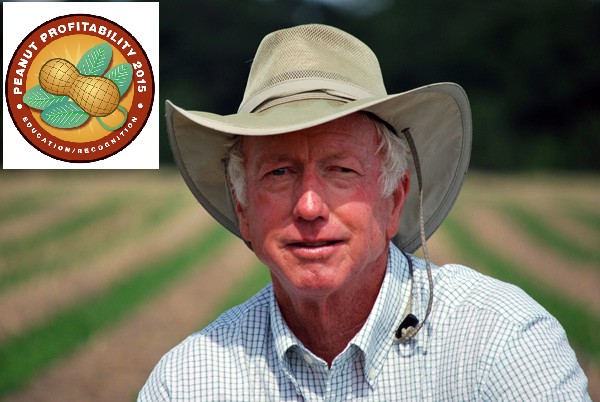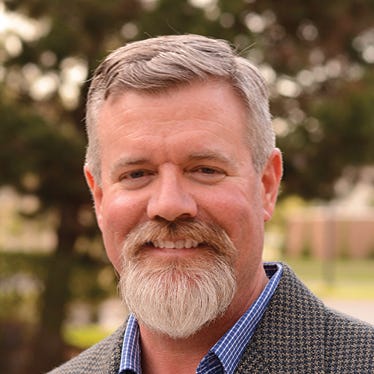
Johnny Cochran’s hands-on approach keeps peanuts profitable
When it comes to his farming operation Johnny Cochran, in many ways, is a one-man show — though he wouldn’t put it that way. He uses the term “We” when he speaks about his farm’s past and future, and he means family when he does.

When it comes to his farming operation Johnny Cochran, in many ways, is a one-man show — though he wouldn’t put it that way. He uses the term “We” when he speaks about his farm’s past and future, and he means family when he does.
The operation has always been, and remains to this day, a family farm.
For Cochran, 60, a strict crop rotation keeps peanuts profitable — plus, he says with a laugh, “By the time you get to my age, you need to have your stuff (equipment) pretty much paid for. That helps.”
He grows peanuts and cotton in Worth County, Ga., a place with a long history as one of the top peanut-producing counties in the leading peanut-producing state. For his practical approach to production and hands-on management, Cochran is the 2015 Farm Press Peanut Profitability Award winner for the Lower Southeast region.
“We’ve always grown peanuts, and the main reason we still grow them is for the economic return,” he says. “We’ve grown them through many different farm policy programs. It’d be hard to imagine not having peanuts in our crop mix.”
The family farm includes wife, Cindy, who recently retired after 34 years as a registered nurse; his son, Brett, 31, who now has a good job off the farm after graduating college, but still helps on the farm when he’s not working his other job; daughter, Rebekah, 27, who is getting a veterinarian degree from the University of Georgia; and often, Cochran’s brother, Jimmy, who is retired but works a cattle operation just up the road; and one part-time employee.
Management duties
Standing on a water tank trailer, flushing hoses and filling the tank, Cochran jokes, “The boss man’s not supposed to be doing this sort of work, is he?” But on his farm, the boss man does do such things, and much more: He’s the decision maker, tractor driver and equipment fixer, the guy loading the seed hoppers and mixing and applying crop protectants, marketing the crops, and running the pickers.
Cochran plants about 1,000 acres, of which about 80 percent is owned. Two-thirds of the land is irrigated. He plants cover crops, and he’s 100 percent strip-till — has been for many years. He hasn’t grown corn since the mid-1980s. He started growing cotton in 1990, and since then his rotation has been two years cotton and one year peanuts.
He tightened that rotation on a few fields this year that didn’t have a bad peanut disease history, and is going with just one year off a peanut crop. He��’ll end up with about 10 percent more peanuts than his typical rotation. As is the case for many growers, peanuts will cash flow better than other options.
He plants Georgia-06G.
Thirty to 40 days before planting, he does a burndown with Roundup and 2,4-D. At planting, he applies Prowl H20 and Valor, and if he has emerged grass and weeds he will include Gramoxone. At 40 days after planting, he makes an application of Cadre and Strongarm with 2,4-D.
Generally, before spraying with Cadre, he scouts fields for grass, particularly buffalograss. If a field has it, he’ll apply a product to take care of the grass before the Cadre application. In some fields, he has to come back with another application of 2,4-D to take care of any coffeeweed.
Uses weed-free approach
He does his best to keep peanut fields weed-free; any escaped weeds or grasses can cause pod loss at digging time, and that’s not an option. He hand weeds, too, as needed, especially to take care of any Palmer amaranth escapes.
“We really try to keep down our weed seed bank, try to have zero weeds go to seed,” Cochran says. “That’s the goal — but it seems accomplishing that is getting harder and harder.”
His fungicide program centers on timely application, while avoiding the potential for fungicide resistance. To help make fungicide application decisions, he uses AUPnut, the Auburn University web-based leaf spot advisory system available through the Agriculture Weather Information Service. This year, he will use the new Peanut RX app and compare the two to see how he can better accomplish “on-demand” fungicide applications on a field-by-field basis, as required by weather and growing conditions.
He usually makes an application of chlorothalonil, along with at least two applications of Fontelis, starting around mid-season. He fills the gaps with Headline and other materials to lower the risk of resistance. This year, he used Velum Total in-furrow to see what it can do to get seed off to a good start and carry plants through early leaf spot disease pressure.
Banks fertility
Cochran says he “banks” his fertility. With 5,000 to 6,000 pounds of peanuts per acre coming off fields, he says, a lot of P and K is leaving, so he uses soil samples and goes by recommendations to keep the soil fertility bank stocked.
“At some point, we might not be able to afford fertilizer,” he says. “I might not dip into that fertility bank this year, but we don’t know what next year will be like — it might be a year we can’t justify spending what we typically do on fertility. But we’ll have that fertility reserve in the field to pull from, and that’s as good as money in the bank.”
To spread risk on irrigated and dryland cotton fields, he plants at least four different varieties, sticking mostly with Deltapine full-season varieties. He is a participant in Monsanto’s New Product Evaluator program, testing varieties on his farm because he wants to know how they will perform on his land before going all in with them.
But getting longer-term data on varieties is becoming harder and harder for growers, he says.
“Seems like cotton varieties are coming out so fast now that the universities don’t have enough time to get two or three years’ worth of data to see how they do before that variety is gone or replaced with something else — and that concerns me. I like to know, or see, the three-year data, before I fully plant a variety.”
This year, the Cochran family will have had farm land in Worth County for 100 years. But when Johnny was in junior high school, the land was mostly rented out.
His first peanut crop was in 1976, when he was 20 years old and sharecropped with Roy Barksdale, for whom he worked at the time while attending Abraham Baldwin Agricultural College at nearby Tifton, Ga. Barksdale was himself sharecropping with the land owner. He gave Cochran his position in the deal and use of his equipment in exchange for Cochran’s labor.
“I made money — enough money that it turned me on to farming,” Cochran says.
With prices lagging for major commodities and not much promise of profit in the near term, Southeast agriculture, as is the case with farming in other regions of the country, is facing tough economic times.
“It’s tougher to make a profit in years like this,” Cochran says. “You just have to watch the inputs, not sacrifice too much, and avoid cutting anything that will reduce your yields. Farming has provided a good life for us. The Good Lord has blessed me by being able to do something I enjoy and provide for my family. I still enjoy putting seed in the ground, nurturing it, and seeing what I get.”
About the Author(s)
You May Also Like





